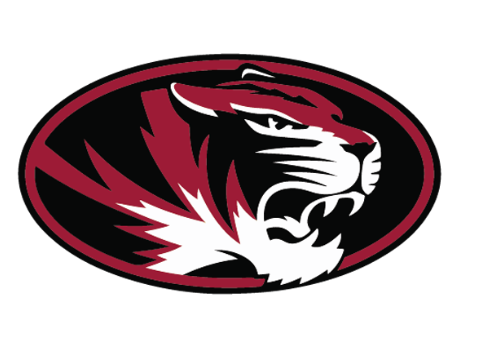Tuttle High School has a written emergency action plan that should be followed in the event of a medical emergency. All coaches should be familiar with this document and their role and responsibility in an emergency. Any questions should be directed to the certified athletic trainer (or school administrator, in the absence of a licensed athletic trainer).
An emergency is defined as: The need for Emergency Medical Services (EMS) to give further medical attention and/or transportation of an athlete to the hospital.
It is important in emergency situations that coordination between the entire chain of command remains effective & efficient to ensure proper treatment to the injured individual. This guide is intended to delineate roles and outline the protocol to be followed should an emergency occur & EMS be activated.
Situations when 911 should be activated are as follows:
- An athlete has lost consciousness & is not breathing, or any combination of the two.
- Suspected spinal fracture/injury
- Open fractures (bone has punctured through the skin), or gross (significant) bony deformity
- Severe heat illness such as: heat exhaustion or suspected heat stroke
- Severe bleeding that cannot be stopped
- Cardiac Arrest
Chain of Command:
Team Physician
Certified Athletic Trainer
Athletic Director
Administrator
Head Coach
Assistant Coach
Student Athletic Training Aides
Other Athletes
The highest person in the chain of command who is present at a scene will be the designated person in charge, or leader. That person is responsible for deciding whether or not to call 911, instructing others how they may be of help and will be the person who stays with the athlete until EMS arrives.
*Once EMS activation is initiated, the following protocol should be followed*
1. The highest person on the chain of command will be deemed the leader, and will stay with the athlete to monitor the athlete’s condition and administer necessary first aid. If possible, someone else on the chain of command should also stay and assist. The front office or an administrator should be notified that there is an emergency situation on campus.
2. The highest person on the chain of command will make the call to EMS or will designate another person to make the call. (If calling from a school phone, just dial the 10 digit number. There is no need to dial anything else.) EMS should be told what the emergency is, the condition of the athlete and how to get to where the athlete is. Also, tell EMS that someone will meet them at the closest intersection to aid in directing the ambulance.
***DO NOT HANG UP UNTIL EMS HANGS UP FIRST.***
3. Landline phones at Tuttle High School are located in the main office & all coaches offices. The use of a cell phone by any member in the chain of command or bystander is encouraged before use of a landline phone.
4. The leader will send runners to all intersections & points of entry between where the athlete is located and Tuttle High School/venue-specific location to direct the ambulance to the athlete. The runners should stay in their positions and wave the ambulance through the proper turns to get to the athlete.
5. The leader will designate another person to attempt contact with the athlete’s parents. Emergency contact information can be found on the Rankone website/app which coaches, athletic trainers, designated individuals should have with them at all times. If a parent is not present, the form should accompany the athlete to the hospital.
6. If transport is deemed necessary by EMS, the athlete will be taken to Norman Regional Hospital 901 N. Porter Ave, Norman, OK 73071, unless the parent requests otherwise and the emergency contact information will be provided by the leader/designated to EMS.
Addresses and Locations of Automated External Defibrillators
**Certified Athletic Trainer will bring additional AED with them to all competitions to have on the sideline/bench area**
TUTTLE HIGH SCHOOL (gymnasium, weightroom, wrestling room, auditorium) is located at:
300 N. Cimarron Rd, Tuttle, OK
The closest intersection to the school is State Highway 37 and Cimarron Rd.
Location of AED’s: AED’s are located upstairs at the intersection of the two hallways and downstairs in the cafeteria/gym lobby.
TUTTLE HIGH SCHOOL CHEER BARN is north of the high school and AG barn, located at:
300 N. Cimarron Rd, Tuttle, OK
The closest intersection to the school is State Highway 37 and Cimarron Rd.
Location of AED: The Cheer AED is located directly next to the door on the east side of the building.
TUTTLE HIGH SCHOOL TRACK, PRACTICE FOOTBALL FIELD, and SOFTBALL FIELD are located directly east of the High School Building located at:
300 N. Cimarron Rd, Tuttle, OK
The closest intersection to the school is State Highway 37 and Cimarron Rd.
Location of AED’s: Other AED’s are located upstairs at the intersection of the two hallways and downstairs in the cafeteria/gym lobby. Softball AED is located in Softball coaches office
TUTTLE HIGH SCHOOL BASEBALL FIELD and INTERMEDIATE GYM are located at:
402 East Oak Ave, Tuttle, OK
The closest intersection to the school is Oak ave and Margaret Dr.
Location of AED’s: Another AED is located in the baseball coaches office. An AED is located in the gym lobby and main office of the Intermediate School.
TUTTLE HS FOOTBALL FIELD, FOOTBALL WEIGHT ROOM & OLD SOFTBALL FIELD is located south of Tuttle High School Building located at:
300 N. Cimarron Rd, Tuttle, OK
The closest intersection to the school is State Highway 37 and Cimarron Rd.
Location of AED’s: An AED is located in the concession stand of the MS softball field. Other AED’s are located upstairs at the intersection of the two hallways and downstairs in the cafeteria/gym lobby.
TUTTLE MS FOOTBALL FIELD, GYMNASIUM and MS WEIGHTROOM are located south/behind the Tuttle Middle School Building located at:
604 S. Cimarron Rd, Tuttle, OK
The closest intersection to the school is Hogan Ave and Cimarron Rd.
Location of AED’s: An AED is located in the cafeteria/gym lobby and also in the counselor's office (located across from the main office).
TUTTLE ELEMENTARY GYMNASIUM is located within the Tuttle Elementary School Building located at:
206 SW 2nd St, Tuttle, OK
The closest intersection to the school is 2nd St and Locust Street
Location of AEDs: One AED is located in the nurse’s office (beside the main office) and one is located outside the cafeteria doors.
**Certified Athletic Trainer will bring additional AED with them to all competitions to have on the sideline/bench area**
DOCUMENTATION OF EVENT
Leader’s Name_________________________ DATE/TIME:
Asst. Leader’s Name_____________________ Location:
Person to meet EMS_____________________
Person accompanying student with EMS________________________
Description:
Contact Information:
Athletic Trainer: Geoff Hargis 405-531-8644
School Administrator: Sean Brooks 405-609-7134
Richard Collins 405-863-3508
Matt Surber 405-779-3100
Tara Norvell 405-532-3077
John Hannon 405-317-3526
Tanner Harris 405-213-3663
Fire/Ambulance/EMS: 911










